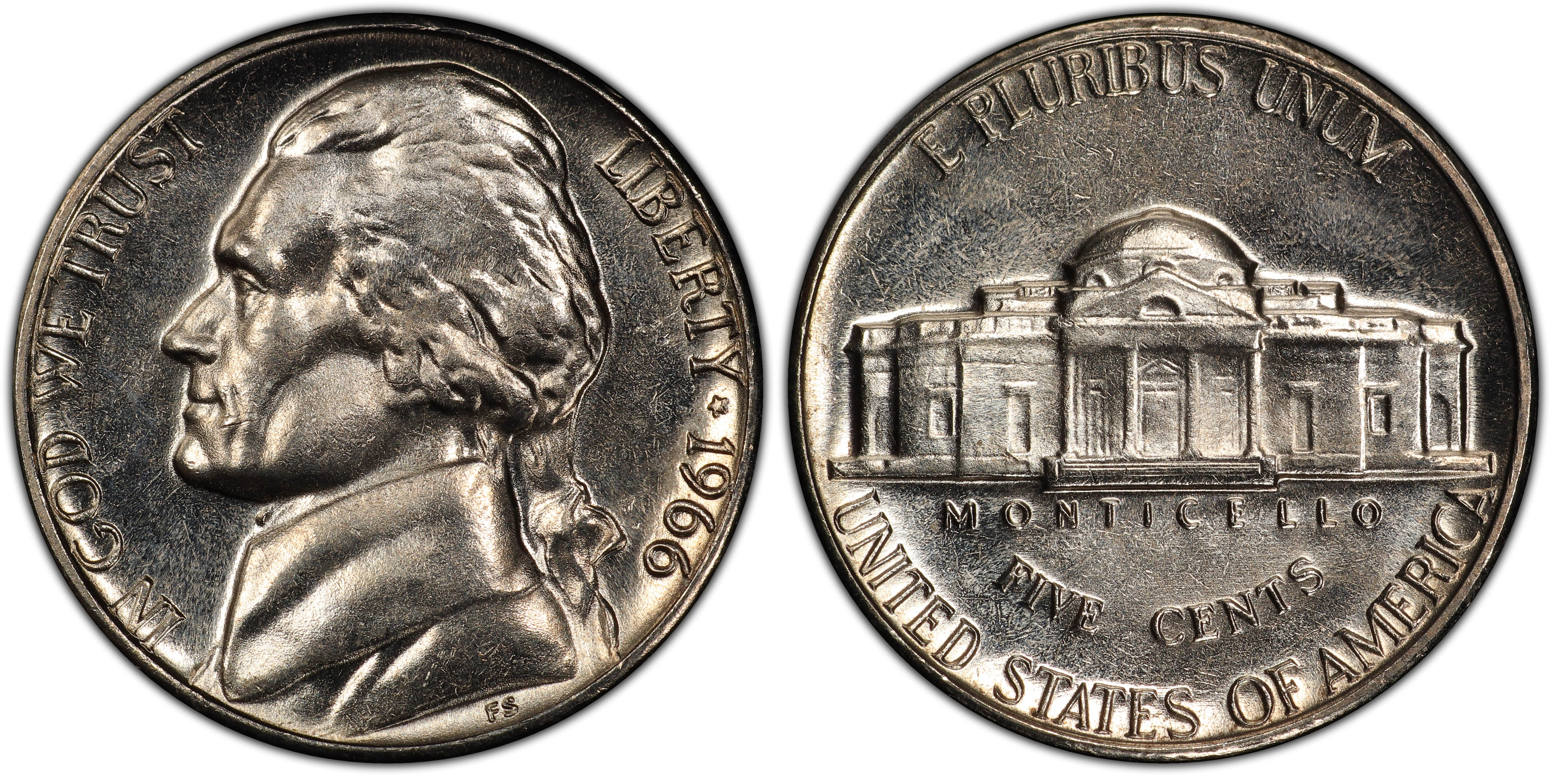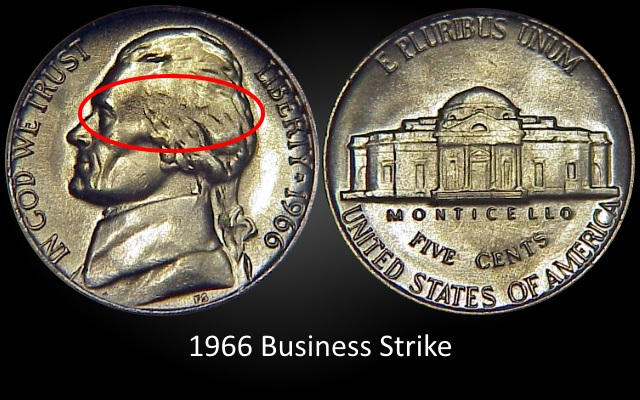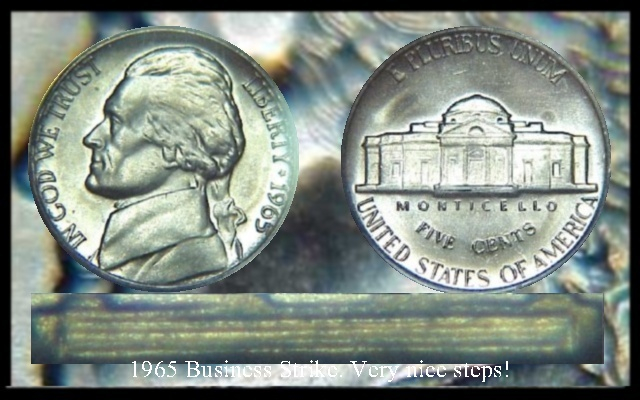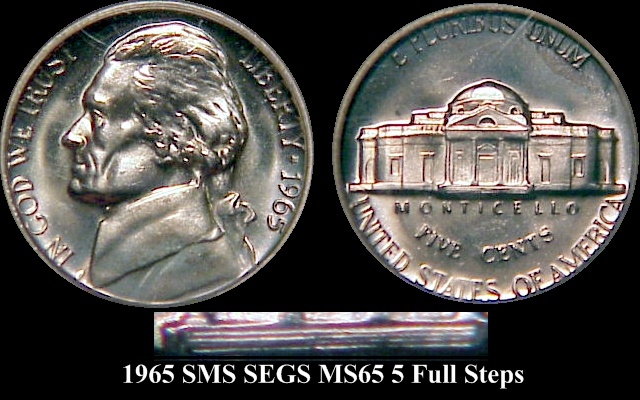LOL. Perhaps your personal standards for "steps" at 20X are tighter than others which is OK.
you are correct, 20X is my go to glass and full steps means FULL steps to me. On the new design I demand unbroken steps on all three sets of steps under 20X, and do not get me started on windows...
Even though that top step is pretty thick, I also think it's an R38. I think on an R38, the merged steps 3 and 4 under pillar 2 would be forgiven, but the gash on the lower left should prevent it from being FS. Which probably means it either already sitting in a FS holder or soon will be.
If we were all the same, the world would be an incredibly boring place.
At one time, FIVE steps was considered to be FS. Then the standard was changed to six steps. In the 1990's, PCI even used 5 1/2 steps. I don't recall if 1/4 and 3/4 was also used.
There are some smart folks here, it definitely looks to be the 66 66 plate coin.
You can put it in whatever holder you like, but if the emperor is not wearing clothes, well - he's naked. Abstract way of saying it's just not full steps. It's just not. Tired and worn-out subject I know, but it's just not. And mannie, I'm neither a buyer nor a seller. It's just not.
I thought out of curiosity I would look at the 64FS coin for comparison, but unfortunately it's an image of a 63-D (feedback sent to PCGS).
If we were all the same, the world would be an incredibly boring place.
I just just took an Uncirculated nickel and placed it under my scope to match the image above. We are looking at the steps of a coin magnified between 25X and 30X.
Folks, coins are not "Commercially" graded at 25+ power except by .... ah, never mind.
Professionals don't grade at that power either. If this coin is in a TPGS slab as FS, that's good enough for the coin market.
Now, no one can tell any of us what we do personally. If you want to grade coins using a 16X to 20X hand lens or stereo microscope (I do set at 7X), fine. Just keep it "real."
Truthfully I would give it FS if it wasn't for the Nick on the bottom step between 1 and 2 Pillar
Saying that, I also have to say that I really don't think they get any better for a 1966 non SMS
nickel, heck SMS nickels would have a hard time coming up with those steps, so I just be this
I just just took an Uncirculated nickel and placed it under my scope to match the image above. We are looking at the steps of a coin magnified between 25X and 30X.
Folks, coins are not "Commercially" graded at 25+ power except by .... ah, never mind.
Professionals don't grade at that power either. If this coin is in a TPGS slab as FS, that's good enough for the coin market.
Now, no one can tell any of us what we do personally. If you want to grade coins using a 16X to 20X hand lens or stereo microscope (I do set at 7X), fine. Just keep it "real."
Doesn't matter what magnification one uses here, even with a 7X that huge bridge connecting steps 3 and 4 will be very obvious.
OK, The coin is NOT MY personal FS either for the reasons posted but IMO, it is easily a "commercial" FS - So I agreed with Mr. Carr. However, if the OP had done a Poll, I'll bet over 80% would say Not FS.
I would not consider it FS....and that means that I would not add it to my collection... Perhaps others would, and that is fine for their collection. Cheers, RickO
Not my type of interest, but given the huge price difference for some years with FS, stretching the definition to include "commercially acceptable" coins doesn't make a lot of sense, as I doubt that serious Jeff collectors would pay up for this as a FS regardless, at least for the scarcer FB years. I certainly wouldn't accept this sort of lax treatment for FB Mercs, which I'm more familiar with. I would add that I don't think one would need 20x magnification to spot the breaks. Further, the high-dollar FS coins would and should be subjected to higher magnification in any event.
@oldabeintx said:
Not my type of interest, but given the huge price difference for some years with FS, stretching the definition to include "commercially acceptable" coins doesn't make a lot of sense, as I doubt that serious Jeff collectors would pay up for this as a FS regardless, at least for the scarcer FB years. I certainly wouldn't accept this sort of lax treatment for FB Mercs, which I'm more familiar with. I would add that I don't think one would need 20x magnification to spot the breaks. Further, the high-dollar FS coins would and should be subjected to higher magnification in any event.
You must be new to the hobby. What do you think has been going on for decades? Everything has been S t r e t c h e d! That includes grades and designations. Only the collector can hold their own personal "line" as you and I have.
Take bell lines as the perfect example. One of the two sets has been DROPPED COMPLETELY by some folks!
Here's the link on the OP coin for those who may be puzzled what coin is referred to in my description/opinion. https://www.pcgs.com/coinfacts/coin/1966-5c-fs/84078
Not full steps! Doesn't have full pillars with one and four missing segments. The windows are mushy, deep full hair lines are missing, the triangle is completely missing one side which is very odd. The steps are a consequence of all the missing details in the working dies that struck this coin. The metal that was intended for the the hair, the windows, the pillars, the triangle, all that metal went into, filled up those steps which were, obviously in the die. How strange! hmmm I say this because it takes some time, as a few have proven by some comments here, how difficult it is to understand, deficiencies in the strike will lead to steps on a coin. This is far from being a true 5 step collector's example. The bridging and the deep hit on the steps is the least to worry about when there are strike deficiencies. The thick top step makes it "Rev. of 1940". This date is a very difficult coin to find nice with a decent strike, grade and steps. After almost 30 years, I'm still looking myself. From Coinfacts, I like the following much better, see all the details plus it doesn't have that big nick, in an area that gets the most attention, Jefferson's cheek.
Cheers Leo
The more qualities observed in a coin, the more desirable that coin becomes!
I don't know, lets say for example you were running for "THE" office for a 3rd time and you slipped and fell down on the way up the those stairs. Then I would say "Maybe", worth a try right. But, I would find it hard to climb the first two...
They look very slippery.
As others have already stated, the lack of definition under the second column 3rd and 4th steps would prevent this from being a full step nickel. I use Bernard Nagengast's "The Jefferson Nickel Analyst" reference for step count.
Here's my 1966, nice strike on the Monticello and steps but there's a huge segment of die erosion on the obverse in the hair. The metal that should have went into that area that was not in the die very likely helped fill out the reverse devices.
This 1965 shows what a prized 1966 should look like.
And someone mentioned how difficult it is to locate SMS nickels with 5 steps. This one, albeit someday I'll show a blowup of these steps but the 4th step under the 2nd pillar is there which is kinda neat if you have ever searched for such a coin. The same dies were used to strike both SMS and business strikes for dates 1965 and 1966. For the 1967 SMS nickels to 1970, the reverse die was improved, the steps were improved but yet no 1967 business strikes can be found with any steps.
Leo
The more qualities observed in a coin, the more desirable that coin becomes!
Here's the link on the OP coin for those who may be puzzled what coin is referred to in my description/opinion. https://www.pcgs.com/coinfacts/coin/1966-5c-fs/84078
Not full steps! Doesn't have full pillars with one and four missing segments. The windows are mushy, deep full hair lines are missing, the triangle is completely missing one side which is very odd. The steps are a consequence of all the missing details in the working dies that struck this coin. The metal that was intended for the the hair, the windows, the pillars, the triangle, all that metal went into, filled up those steps which were, obviously in the die. How strange! hmmm I say this because it takes some time, as a few have proven by some comments here, how difficult it is to understand, deficiencies in the strike will lead to steps on a coin. This is far from being a true 5 step collector's example. The bridging and the deep hit on the steps is the least to worry about when there are strike deficiencies. The thick top step makes it "Rev. of 1940". This date is a very difficult coin to find nice with a decent strike, grade and steps. After almost 30 years, I'm still looking myself. From Coinfacts, I like the following much better, see all the details plus it doesn't have that big nick, in an area that gets the most attention, Jefferson's cheek.
Cheers Leo
Dear Leo,
I understand that groups of collectors get together and make up their own rules for their specialty. Large Cent collectors are the largest of these. Decades ago, I nearly fell off my chair when a Franklin half dollar specialist told me that a Franklin with two complete and full sets of bell lines on its reverse was NOT a FBL specimen because the wisp of hair by Franklin's ear ON THE OBVERSE was not separated!
Wacko!
The poor fellow and his ilk were confusing "fully struck on both sides coins" and any coin with FBL on its reverse.
It seems that your post contains a similar notion that does not involve the obverse.
Let's ASSUME for argument that this coin DID HAVE sharp, strong, unbroken steps with no bridges or hits. What the heck do triangles and windows have to do with anything? Perhaps the "Ex-Perts" who have made up such nonsense are actually very confused. You see, a nickel can have a superb strike with every detail very sharp including its FULL STEPS while a another coin my not be as sharp yet have identical appearing FULL STEPS.
IMO, I think the TPGS's would agree that both coins in my example above have full steps. If they happen to be less critical with "breaks" on occasion, that is THEIR problem. As collectors, we don't need to agree with any TPGS, or buy a coin that does not meet our personal standards or those of the specialty clubs.
PS In summary, the only thing that matters when adding a designation to a coin such as FS is the STEPS!
Comments
I would consider that to be 5 full steps, but not 6 full.
No... Shouldn't there be one more at the bottom?
Collector, occasional seller
That gash across the lower left steps should prevent a FS designation.
Not FS imo
Not FS in my opinion either.
Successful BST transactions with lordmarcovan, Moldnut, erwindoc
Looks like a 1938 reverse? To my recollection step details are kind of mushy to begin with. So yes I would say it's FS.
Looks like too much merging with 3 & 4. No FS.
My Original Song Written to my late wife-"Plus other original music by me"
https://youtube.com/playlist?list=PL8A11CC8CC6093D80
U.S. Army Veteran 1/11 ACR Fulda, Germany
I would not call that FS, the merge on step 3&4 under the second column makes it a no go.
My Collection of Old Holders
Never a slave to one plastic brand will I ever be.
Even though that top step is pretty thick, I also think it's an R38. I think on an R38, the merged steps 3 and 4 under pillar 2 would be forgiven, but the gash on the lower left should prevent it from being FS. Which probably means it either already sitting in a FS holder or soon will be.
If we were all the same, the world would be an incredibly boring place.
Tommy
On Tuesdays & Thursdays Maybe, and No on Mondays & Fridays, is that an Early 60's Nickel maybe 64 or 65 ?
Steve
This is the 1966 MS66 MS66 FS, isn't it? I was looking at this coin's TrueView earlier today. Incredible coin.
Yes, I'd call it FS.
As a seller of said coin, yes, FS.

As a buyer, no FS.
It's close.
Thanks for pointing it out, I knew it was a early or mid 60's nickel, and ya, I'll agree to it is a nice 66 66
Steve
At one time, FIVE steps was considered to be FS. Then the standard was changed to six steps. In the 1990's, PCI even used 5 1/2 steps. I don't recall if 1/4 and 3/4 was also used.
Not even close. I don't see one unbroken line.
I gave up trying to figure it out a long time ago.
This.
There are some smart folks here, it definitely looks to be the 66 66 plate coin.
You can put it in whatever holder you like, but if the emperor is not wearing clothes, well - he's naked. Abstract way of saying it's just not full steps. It's just not. Tired and worn-out subject I know, but it's just not. And mannie, I'm neither a buyer nor a seller. It's just not.
I thought out of curiosity I would look at the 64FS coin for comparison, but unfortunately it's an image of a 63-D (feedback sent to PCGS).
If we were all the same, the world would be an incredibly boring place.
Tommy
I just just took an Uncirculated nickel and placed it under my scope to match the image above. We are looking at the steps of a coin magnified between 25X and 30X.
Folks, coins are not "Commercially" graded at 25+ power except by .... ah, never mind.
Professionals don't grade at that power either. If this coin is in a TPGS slab as FS, that's good enough for the coin market.
Now, no one can tell any of us what we do personally. If you want to grade coins using a 16X to 20X hand lens or stereo microscope (I do set at 7X), fine. Just keep it "real."
Truthfully I would give it FS if it wasn't for the Nick on the bottom step between 1 and 2 Pillar
Saying that, I also have to say that I really don't think they get any better for a 1966 non SMS
nickel, heck SMS nickels would have a hard time coming up with those steps, so I just be this
Steve
Doesn't matter what magnification one uses here, even with a 7X that huge bridge connecting steps 3 and 4 will be very obvious.
OK, The coin is NOT MY personal FS either for the reasons posted but IMO, it is easily a "commercial" FS - So I agreed with Mr. Carr. However, if the OP had done a Poll, I'll bet over 80% would say Not FS.
I would not consider it FS....and that means that I would not add it to my collection... Perhaps others would, and that is fine for their collection. Cheers, RickO
Not my type of interest, but given the huge price difference for some years with FS, stretching the definition to include "commercially acceptable" coins doesn't make a lot of sense, as I doubt that serious Jeff collectors would pay up for this as a FS regardless, at least for the scarcer FB years. I certainly wouldn't accept this sort of lax treatment for FB Mercs, which I'm more familiar with. I would add that I don't think one would need 20x magnification to spot the breaks. Further, the high-dollar FS coins would and should be subjected to higher magnification in any event.
You must be new to the hobby. What do you think has been going on for decades? Everything has been
S t r e t c h e d! That includes grades and designations. Only the collector can hold their own personal "line" as you and I have.
Take bell lines as the perfect example. One of the two sets has been DROPPED COMPLETELY by some folks!
"You must be new to the hobby. What do you think has been going on for decades? Everything has been
S t r e t c h e d! "
Started collecting around 1954 using paper route money. I know I know, agree re "stretched", but I'm old and stubborn.
Here's the link on the OP coin for those who may be puzzled what coin is referred to in my description/opinion.

https://www.pcgs.com/coinfacts/coin/1966-5c-fs/84078
Not full steps! Doesn't have full pillars with one and four missing segments. The windows are mushy, deep full hair lines are missing, the triangle is completely missing one side which is very odd. The steps are a consequence of all the missing details in the working dies that struck this coin. The metal that was intended for the the hair, the windows, the pillars, the triangle, all that metal went into, filled up those steps which were, obviously in the die. How strange! hmmm I say this because it takes some time, as a few have proven by some comments here, how difficult it is to understand, deficiencies in the strike will lead to steps on a coin. This is far from being a true 5 step collector's example. The bridging and the deep hit on the steps is the least to worry about when there are strike deficiencies. The thick top step makes it "Rev. of 1940". This date is a very difficult coin to find nice with a decent strike, grade and steps. After almost 30 years, I'm still looking myself. From Coinfacts, I like the following much better, see all the details plus it doesn't have that big nick, in an area that gets the most attention, Jefferson's cheek.
Cheers Leo
The more qualities observed in a coin, the more desirable that coin becomes!
My Jefferson Nickel Collection
I don't know, lets say for example you were running for "THE" office for a 3rd time and you slipped and fell down on the way up the those stairs. Then I would say "Maybe", worth a try right. But, I would find it hard to climb the first two...
They look very slippery.
Preferred Customer Grading Service!
As others have already stated, the lack of definition under the second column 3rd and 4th steps would prevent this from being a full step nickel. I use Bernard Nagengast's "The Jefferson Nickel Analyst" reference for step count.
Here's my 1966, nice strike on the Monticello and steps but there's a huge segment of die erosion on the obverse in the hair. The metal that should have went into that area that was not in the die very likely helped fill out the reverse devices.



This 1965 shows what a prized 1966 should look like.
And someone mentioned how difficult it is to locate SMS nickels with 5 steps. This one, albeit someday I'll show a blowup of these steps but the 4th step under the 2nd pillar is there which is kinda neat if you have ever searched for such a coin. The same dies were used to strike both SMS and business strikes for dates 1965 and 1966. For the 1967 SMS nickels to 1970, the reverse die was improved, the steps were improved but yet no 1967 business strikes can be found with any steps.
Leo
The more qualities observed in a coin, the more desirable that coin becomes!
My Jefferson Nickel Collection
Dear Leo,
I understand that groups of collectors get together and make up their own rules for their specialty. Large Cent collectors are the largest of these. Decades ago, I nearly fell off my chair when a Franklin half dollar specialist told me that a Franklin with two complete and full sets of bell lines on its reverse was NOT a FBL specimen because the wisp of hair by Franklin's ear ON THE OBVERSE was not separated!
Wacko!
The poor fellow and his ilk were confusing "fully struck on both sides coins" and any coin with FBL on its reverse.
It seems that your post contains a similar notion that does not involve the obverse.
Let's ASSUME for argument that this coin DID HAVE sharp, strong, unbroken steps with no bridges or hits. What the heck do triangles and windows have to do with anything? Perhaps the "Ex-Perts" who have made up such nonsense are actually very confused. You see, a nickel can have a superb strike with every detail very sharp including its FULL STEPS while a another coin my not be as sharp yet have identical appearing FULL STEPS.
IMO, I think the TPGS's would agree that both coins in my example above have full steps. If they happen to be less critical with "breaks" on occasion, that is THEIR problem. As collectors, we don't need to agree with any TPGS, or buy a coin that does not meet our personal standards or those of the specialty clubs.
PS In summary, the only thing that matters when adding a designation to a coin such as FS is the STEPS!
If it's a key date and a big dealer submitted it, it's FS.
Check out my iPhone app SlabReader!